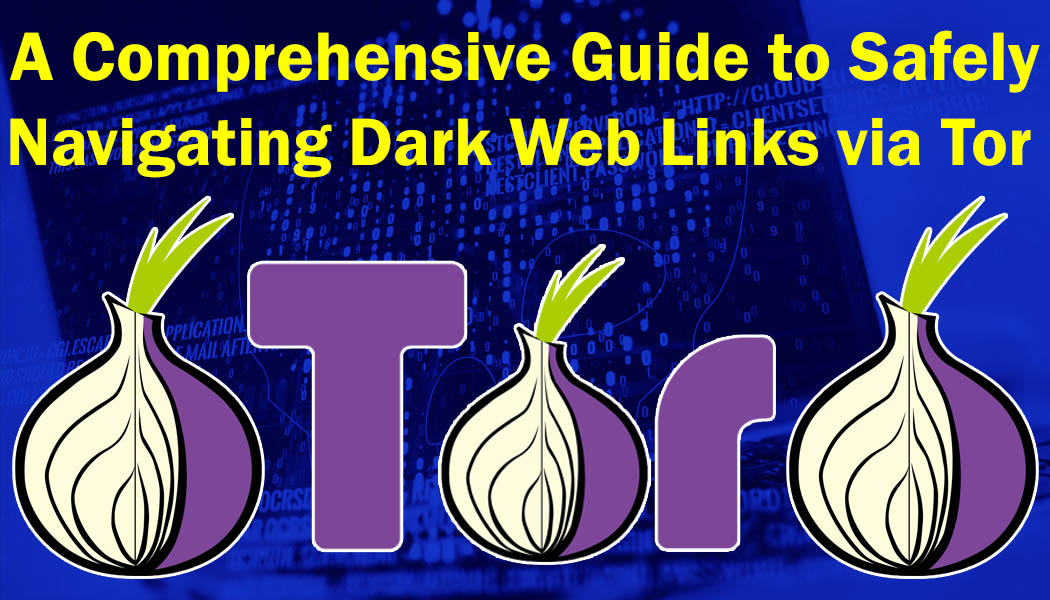Dark web links, also known as onion links, offer access to the hidden realms of the internet. To explore these links safely and anonymously, users often rely on Tor, a popular software that enables secure and private browsing. In this article, we will provide a step-by-step guide on how to use dark web links through Tor, ensuring a secure and anonymous dark web experience.
Understanding Tor: The Gateway to the Dark Web
Tor, short for The Onion Router, is a network that directs internet traffic through a series of encrypted relays, making it difficult to trace users’ activities. It is the primary tool used to access dark web links and maintain anonymity while browsing the hidden parts of the internet.
Install and Configure Tor Browser
The first step is to download and install the Tor Browser, a modified version of Mozilla Firefox designed to access the Tor network. Once installed, launch the Tor Browser and follow the setup instructions, including connecting to the Tor network.
Accessing Dark Web Links
To access dark web links, you need to obtain them from reliable sources. These links typically end with the “.onion” domain. You can find directories and forums that list dark web links, but exercise caution as some may contain malicious or illegal content.
Copy and Paste the Dark Web Link
Once you have obtained a dark web link, copy it from the reliable source and paste it directly into the address bar of the Tor Browser. Ensure that the link starts with “http://”, “https://”, or “www” and ends with “.onion”.
Navigate Dark Web Sites
After pasting the dark web link, press Enter to access the website associated with the link. The Tor Browser will establish a secure connection through the Tor network, masking your IP address and providing anonymity.
Follow Best Practices for Dark Web Browsing

While using dark web links through Tor, it’s essential to follow best practices to protect your privacy and security. These include:
- Disable JavaScript: To enhance anonymity, consider disabling JavaScript in the Tor Browser’s settings. This can help mitigate potential security risks.
- Avoid Personal Information: Refrain from sharing personal information or engaging in activities that could compromise your privacy or lead to legal consequences.
- Use Cryptocurrency for Transactions: When making purchases on dark web marketplaces, consider using cryptocurrencies like Bitcoin for added anonymity.
- Exercise Caution: Be vigilant and exercise caution when navigating dark web sites. Be mindful of potential scams, illegal activities, or malicious content.
Using dark web links through Tor can provide a gateway to the hidden depths of the internet while ensuring anonymity and privacy. By following the steps outlined in this guide and adhering to best practices for dark web browsing, you can explore dark web content safely. Remember to exercise caution, maintain anonymity, and prioritize your online security while navigating the dark web through Tor.
How Dark Web Links Function on Tor: An Overview of the Process
Dark web links, also known as onion links, operate within the Tor network to facilitate access to hidden websites. Understanding how these links work on Tor is essential for users seeking to explore the depths of the dark web securely and anonymously. In this article, we will delve into the mechanics of dark web links on Tor, shedding light on their functionality.
The Basics of Dark Web Links
Dark web links are URLs that end with the “.onion” domain, indicating that they exist within the Tor network. These links are different from regular web addresses, as they require specific software, such as the Tor Browser, to access them. Dark web links act as gateways to hidden websites that cannot be reached through traditional search engines.

Utilizing Tor’s Encryption and Routing
The Tor network functions by encrypting and routing internet traffic through a series of relays, making it challenging to trace a user’s online activity. When a user clicks on a dark web link, the Tor Browser establishes a connection to the Tor network, encrypting data and directing it through multiple relays before reaching the destination.
Accessing Hidden Services
Dark web links primarily enable access to hidden services, which are websites that are intentionally concealed from regular internet search engines. These hidden services operate within the Tor network and are only reachable through specific dark web links. By using a dark web link on Tor, users can connect to these hidden services securely and anonymously.
The Role of Onion Routing
Onion routing is a fundamental aspect of how dark web links work on Tor. It involves encrypting data in multiple layers, akin to the layers of an onion, hence the name. As data passes through each relay in the Tor network, one layer of encryption is peeled off, revealing the next relay destination. This multi-layered encryption adds an extra level of anonymity and protects users’ identities.
Anonymity and Privacy Considerations
Dark web links on Tor provide users with a heightened level of anonymity and privacy compared to regular internet browsing. The encryption and routing mechanisms of Tor, combined with the use of dark web links, help conceal a user’s identity and location. However, it is important to note that while Tor offers anonymity, it does not guarantee absolute security or protection against all threats.
Navigating Dark Web Links
To access dark web links on Tor, users need to obtain the links from reliable sources, such as dark web directories or forums. Once acquired, the dark web link can be copied and pasted into the Tor Browser’s address bar. The Tor Browser will establish a secure connection through the Tor network, enabling users to access hidden websites associated with the dark web links.

Conclusion:
Dark web links play a crucial role in facilitating access to hidden websites within the Tor network. By understanding how these links work on Tor, users can navigate the dark web securely and anonymously. However, it is essential to exercise caution, adhere to legal boundaries, and prioritize online security while exploring the dark web through dark web links on Tor.
